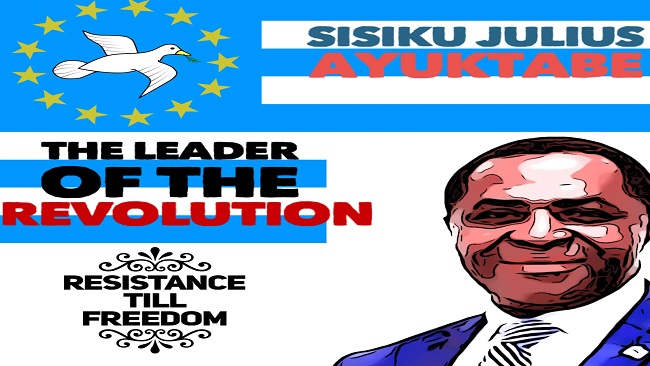Privacy Overview
This website uses cookies so that we can provide you with the best user experience possible. Cookie information is stored in your browser and performs functions such as recognising you when you return to our website and helping our team to understand which sections of the website you find most interesting and useful.


















23, February 2023
The Beautiful Catholic Priesthood Today: The Three Central Questions of Eden, Caesarea Philippi and Tiberias 0
Perhaps of all the days in the Liturgical Calendar, it might appear out of sync for one to reflect on the meaning of the Catholic Priesthood on Ash Wednesday. After all, this day, as does the Church’s Liturgy, constitutes an invitation to reflect on two not very uplifting realities of human existence, namely, our mortality – remember that you are dust and unto dust you shall return; and our frailty – turn away from your sins and believe the Gospel. These two refrains of the ritual of the imposition of ashes – the outward penitential sign of inward repentance, capture in a most sublime manner, the central message of the holy season of Lent: return to the Lord with all your heart, as the Prophet Joel declares. But a deeper reflection into the mystery of the Catholic priesthood can lead us into a more comprehensive correlation between being and remaining a priest today, and the overall invitation of the season of Lent.
At the beginning of Dante’s Divine Comedy, that is, The Inferno, the drama between Dante, Virgil and Beatrice is captured in the existential tension best characterized as the unfolding of Dante’s sinfulness, lived out under the capacities of Reason and Faith. Virgil, as Human Reason, is capable of helping Dante to recognize his sinfulness, and by so doing, begin the path of renouncing sin through Hell and Purgatory. But once Dante gets to the summit of Purgatory, Reason is unable to continue to guide Dante. To enter the Divine Mystery of Paradise, Dante has to count now on Divine Love, Beatrice, to lead him on to Paradise. Faith takes over from Reason, as Dante makes a retrospective understanding of Sin, Reason, and Faith – Inferno, Purgatorio, and Paradiso. Hell is Dante’s recognition of his sinfulness. Purgatory is Dante’s renunciation of his sinfulness. Heaven is Dante in the experience of the light of glory.
As I reflected about being and remaining a priest today, this Ash Wednesday 2023, Isee the connection between this thirteenth century literary mystic’s Comedy, Lent, and the Catholic Priesthood, in that the drama of being a Catholic priest today really unfolds in this hermeneutical framework of human frailty, human mortality (Lent), and most especially, the decisive step towards the Light of Glory (Inferno, Purgatorio and Paradiso), which is what every priest who embraces the call to the priesthood sets out to do. Whether this is always attained remains another question all together. In effect, being a Catholic priest today unfolds from the Inferno through Purgatorio into the Paradiso. And as I further reflected on this existential condition of the Catholic priest today, I was struck by how at three key points in Sacred Scripture, we find the three central questions that shape the three phases of the life of the Catholic priest today.
The first question is what I will qualify as the Question of Eden: Where are you? (Genesis 3:9). The Story of the Fall of Adam and Eve in the Garden of Eden is well known and need not be repeated here. And neither should we occupy ourselves with the whole exegetical question about the relationship between form and content or the literary genre of the text. Aristotle opened his Metaphysics by declaring that all human beings desire to know. In my opinion, this constitutes the logic of questioning. Aquinas opens his Summa by stating one of the qualities of God as omniscience, God knows everything. So, what do we make of God asking a question to Adam, given that God knows everything? It is certainly not for want of knowledge on the part of God. It appears to me that the Question of Eden is an invitation to a realistic assessment of Adam’s existential situation before the truth of God. Now, let’s turn back events to Genesis 1, and there, in the Priestly Account of creation, we find Adam the priest, who on the Seventh Day of God’s rest, offers all of creation back to God in the Cosmic Liturgy of Praise. And now, two chapters later, Adam is hiding from God because he is naked. And not only that, but God also compels Adam to confront the reality of his nakedness: Where are you, Adam? In effect, what has become of the grandeur that I bestowed in and upon you on the day of your priestly ordination, the seventh day of creation, when I ordained you a priest? When I was assigned to the seminary in Boston, I asked a very wise and elderly bishop here in Boston what I should do when I get to the seminary. He said to me, Maurice, help the young men to recognize their own frailty, the Adam in them, accept it, turn to the Lord for forgiveness, and having experienced the Lord’s forgiveness, go out into the whole world to bring the same to all! Eden is where the Catholic priesthood begins. The first ordination happened in Eden on the seventh day. And the Garden of Eden still has much to say about the meaning of being a Catholic priest today.
I will characterize the second as the Question of Caesarea Philippi: Who do you say that the Son of Man is? (Mathew 16:13). If the first question leads the priest today to a recognition of his own frailty, his own sinfulness, a consciousness of the Adam in him, Caesarea Philippi is the deepening and missioning of the mysterious grace of priestly ordination: You are the Christ! Peter’s Profession of Faith is the Purgatorio that moves the priest today from the Inferno of Eden. Like Peter, who himself will become a member of the first batch of priests that the Lord will ordain on Holy Thursday in the Upper Room, the priest today, in the here and now of his existence, is invited to that recognition of utter dependence on the Son of the Carpenter. In spite of Peter’s glaring failures, Jesus the Christ ordains Peter a priest of the New Covenant, for reasons best known to the Christ alone. I sometimes think that Peter might not have made it through the rigors of seminary training today! What categories might one use to explain Hegel’s Phenomenologyor Kant’s Three Critiques to a first century fisherman? And yet, Peter, following the logic of the Cross of the Nazarene, is wiser than Hegel and Kant, with a wisdom that remains relevant to priests today, namely, to depend on Jesus of Nazareth. Isn’t that what Peter’s Profession of Faith is about? Every priest today is invited to say: You, Jesus of Nazareth, are the Christ! And because you are the Christ, I totally depend on you. I will prefer to fall into your hands rather than elsewhere. As the Christ, if I have you, I have everything. And I, finding you as the Christ, have ended up finding myself. I now know myself as the Delphic Oracle had charged Socrates to do, because I have come to know you, the Christ.
The third is the Question of Tiberias: Simon, Son of John, do you love me more than these others? (John 21:15). Cardinal O’Malley of Boston calls this the Last Breakfast, obviously keeping in mind the Last Supper. Again, I will spare us the details of the story, and the exegetical and linguistic acrobatics of an Epilogue and the Greek nuances of agape that is played out in the Greek rendition of the text. What is useful is that we now have the full meaning of being a priest today, namely, one who loves the Christ more than all others. Theology calls this unconditional and absolute love for Jesus, pastoral charity. This is the basis for the priestly commitment to celibate chastity, which remains beautiful, even today, or more so, for today, when the horizon of Paradiso has been greatly eclipsed by a secular immanentism, what Benedict XVI refers to as living a life in a bungalow with no windows! The priest today is a frail man, like Adam. He experiences the Inferno of his own sinfulness and brokenness. But like Peter, he recognizes that only in and with the Christ is help readily available. And the beauty about the life of Peter the Priest is that even when his priestly love falls short, the Christ, whose love is beyond compare, still invites Peter the Priest and by extension, every priest to a new beginning, each day, every time, to rise from his sinfulness and feed Christ’s sheep. And there is no more beautiful vocation in life that to be counted upon by God to do that: bring God to God’s people, and God’s people to God. It is a life of heaven on earth, of the Paradiso of Dante, Inferno and Purgatorio notwithstanding. If anything, the Inferno and the Purgatorio make the Paradiso more beautiful, for where sin abounded, grace abounded all the more, as Paul wrote centuries ago. And that is why being and remaining a Catholic priest today is still beautiful and worth the effort – to continue to bring God to all people and all people to God. And Eden, Caesarea Philippi and Tiberias, can still speak meaningfully about the beauty of the Catholic priesthood today.
By Maurice Agbaw-Ebai